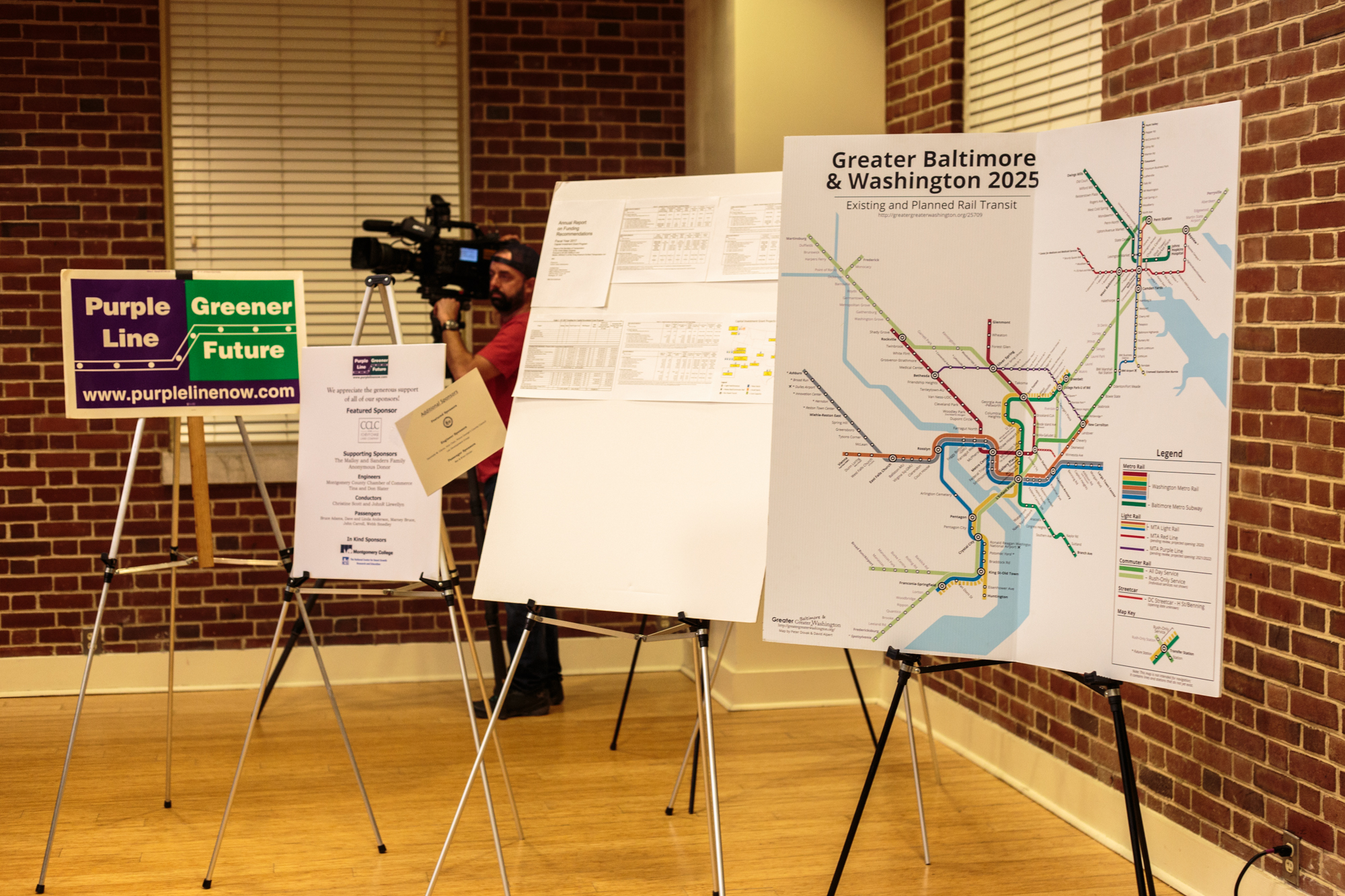With Maryland finalizing plans for the Purple Line, the pattern of ongoing construction and urbanization at the University of Maryland and in College Park is set to continue for at least several years.
Last week, Gov. Larry Hogan announced the winning private companies that will oversee the six-year, $3.3 billion project.
The Purple Line, a 16.2-mile light-rail transit system, will run from Bethesda to New Carrollton, passing through Silver Spring and College Park.
The route will include five stops on and around this university’s campus: M Square, the College Park Metro station, the main entrance to the campus on Route 1, near Stamp Student Union on Campus Drive and on the other edge of campus on Adelphi Road.
The path of the line will also require the iconic “M” circle to move out of the traffic circle and into the grass in front of the nearby Mitchell Building, university spokesman Brian Ullmann said.
This transportation system would have an “enormous” impact on this university and would transform the commute to the campus, university President Wallace Loh said.
“Most of our staff and faculty, most of our graduate students, don’t live here,” he said. “They live in Montgomery County. They live along the route of the Purple Line. … It’s access to your place of work, which is huge. Everybody knows that. You want to have a vibrant community of any sort — people have to get to their place of work.”
College Park Mayor Patrick Wojahn also said he is excited for the Purple Line, especially because it will confront one of the city’s biggest challenges — Route 1 traffic.
“Public transit will bring new development to this city in a way that doesn’t mess up our transportation structure and add traffic to Baltimore Ave.,” Wojahn said. “It will catalyze new development and really bring out all the work the university and the city has been doing.”
Loh also said he believes the city’s economy will flourish with the new transit development.
“The whole purpose of having a light rail go aboveground, as opposed to underground, is that where it goes, businesses just flower and development occurs,” Loh said. “So the mere fact that people have been talking about the Purple Line — now it’s been approved, but it hasn’t been built yet — that’s part of the reason that there’s been so much development in College Park.”
Ken Ulman, the university’s chief strategy officer for economic development, also voiced his support for the new transportation route throughout this campus.
“The Purple Line is an incredibly important transportation project which will connect our great University of Maryland with our neighbors in Montgomery and Prince George’s County,” Ulman said in a statement. “The five stops located within the University footprint will enable students and faculty to access more opportunities and amenities in our nearby research park and innovation district, anchored by a new hotel and conference center.”
Though Loh said the benefits are clear now, the university rejected a similar transit line proposal about 45 years ago.
“We had the opportunity to have that Metro subway underneath Stamp Union, or where Stamp Union is now,” Loh said. “We turned it down — we, meaning our predecessors. … Georgetown also turned it down — both to our regret. So now we have to spend more time, more money, to rectify the mistakes of the past.”
However, others still object to the Purple Line, citing safety concerns, qualms over its appearance and potential disturbance to scientific experiments on the campus due to electromagnetic wave emissions, Loh said. University of Maryland fans are also concerned the light rail “would bisect the parking lot during football tailgates.”
The fact that many of the experiments are conducted underground already prevents much of the interference, and practical solutions exist to the other proposed problems, Loh said.
“Beyond those objections: the aesthetics, the vibrations, the safety and the electromagnetic interference with experiments — these are all fixable,” Loh said, “the answer is not ‘Don’t do it.’ It’s ‘Do the technical solutions for it.'”




